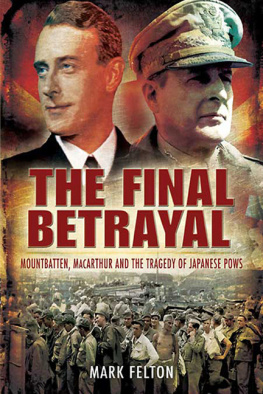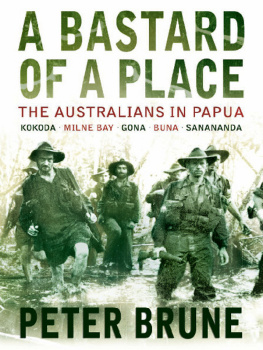

This edition is published by PICKLE PARTNERS PUBLISHINGwww.picklepartnerspublishing.com
To join our mailing list for new titles or for issues with our books picklepublishing@gmail.com
Or on Facebook
Text originally published in 1950 under the same title.
Pickle Partners Publishing 2015, all rights reserved. No part of this publication may be reproduced, stored in a retrieval system or transmitted by any means, electrical, mechanical or otherwise without the written permission of the copyright holder.
Publishers Note
Although in most cases we have retained the Authors original spelling and grammar to authentically reproduce the work of the Author and the original intent of such material, some additional notes and clarifications have been added for the modern readers benefit.
We have also made every effort to include all maps and illustrations of the original edition the limitations of formatting do not allow of including larger maps, we will upload as many of these maps as possible.
OUR JUNGLE ROAD TO TOKYO
By
General Robert L. Eichelberger
In collaboration with Milton MacKaye
TABLE OF CONTENTS
Contents
DEDICATION
I had intended to dedicate this book to my wife, who suffered through four years of separation and uncertainty. She has asked me, instead, to dedicate it to the lads who never came home.
A PERSONAL NOTE
Every story has a beginning, and I suppose mine began when a certain Philip Frederick Eichelberger emigrated to the American colonies in 1728. The Eichelbergers had lived for several generations near Heidelberg, but they were originally German Swiss from Basle. They were honest and good people who fought in the American Revolution and lived in Pennsylvania and Maryland before moving to Ohio. The German blood, through intermarriage with other stocks, grew a little thin, but the name stayed long and rotund. I honor my ancestorsbut their legacy to my three brothers and me was a name more often spelled against than spelled.
The Eichelbergers, when my father first knew them, had shifted from Lutheranism to Methodism. My father, who was graduated from Ohio Wesleyan University, interrupted his education to serve several short enlistments during the Civil War. In later years, when complacent memory and just plain lying elevated the rank of most of his G.A.R. brethren, Father maintained that he was the only non-commissioned officer ever to serve in the Union Army.
My mother was a Southern girl. Mothers family lived in Port Gibson, Mississippi, and she told me many stories of the fighting around Vicksburg. She had personal knowledge of the horrors of war because, as a young girl, she had held the basin while Confederate Army doctors in the field amputated arms and legs. And General McClemand of the Union forces subsequently made his headquarters in the family home. With a Northern father and a Southern mother, to say nothing of a Southern wife, I can only settle gracefully this long after for a position of absolute neutrality in the War between the States.
My grandfathers farm was about a mile east of the public square in Urbana, Ohio. The old homestead, which was built in 1843, still stands. My father was a lawyer, and a good one. His partner was Judge William Warnock, who as a Republican member of Congress gave me my appointment to West Point. I was the youngest of the surviving children. I had one sister, Susan now Mrs. J. B. Zerbe), and my brothers were George, Fred, and Frank. No one, I believe, could have had a happier childhood than ours.
When I was four my father bought a carload of ponies. It would be difficult to explain to modem youngsters the very splendor and expansiveness of this enterprise. Every child in my day wanted a pony; my father bought a carload . The result, of course, was that the old homeplace became the assembly area for most of the boys in Urbana. For a period of years our stables had a distinct resemblance to Grand Central Station. My brothers and I and assorted local volunteers trained those ponies, and they won many prizes in local competitions and at county fairs.
I was graduated from Urbana High School and went on to Ohio State University. In 1905 I entered West Point, and four years later I was graduated. My first assignment as an officer was with the 10th Infantry. Much of this tour of duty was spent in Panama, and it was there I met my wife. She was Emma Gudger, daughter of Federal Judge H. A. Gudger of Asheville, North Carolina, who was then Chief Justice of the Panama Canal Zone. We were married in April of 1913, Those Panama years were memorable ones. Although an obscure lieutenant, I came to know many of the men who were performing an engineering and sanitation miracle; they included General Gorgas, who defeated yellow fever there, and General Sibert, who built the Gatun Dam. I saw the construction of the Culebra Cut and was a passenger on the first ship which made its way through the locks from the Atlantic to the Pacific.
I had my first glimpse of military combat when I was assigned to the 22nd Infantry in 1915 and spent a year in a tent on the Mexican border. The town of Douglas, Arizona, was jammed with American troops. Mexico was ablaze with revolution, and in our particular section General Obregn and Pancho Villa were engaged in a fight to the death. The official view was that General Obregn represented the Mexican government and that Villa was a bandita view that was colored by American sympathies and a view which was, perhaps, not inexact. Our troops were quartered there because no one knew what outrages Villa might attempt. This was the period which President Wilson called watchful waiting.
Villa attacked Agua Prieta, just across the border from Douglas, in what turned out to be a three-day fight. I recall seeing on a chill moonless night just before the attack the hundreds of campfires which indicated Villas men were there in force. And hearing from the surrounding barren hills the eerie clamor of coyotes. When daylight came I watched Villas army of Indian youngsters straggle by with seventeen field pieceswhich in those days, it might be added, was a not inconsiderable amount of artillery.
We Americans could see much of the fighting because in many places only a barbed wire fence separated us from Mexico. We were neutral, but stray bullets know no international law, and there were casualties on our side. (The camp was later called Camp Harry Jones for one of the American soldiers who was killed.) It was a bitter battle without quarter. On one occasion I stood in the door of a slaughterhouse, which was exactly on the international border, and watched the struggle in the parched Sonora sunlight. There was a water hydrant in the slaughterhouse and wounded and dying Mexicans came there to beg for a drink. As neutrals we were under strict orders not to give them waterbut we did.
Villa had the edge in the battle for Agua Prieta. There were no east-west railroads in northern Mexico, but there were railroads on the American side. The Obregonista reinforcements which turned the tide at Agua Prieta came in over the El Paso & Southwestern, an American line. Pancho Villa took this kind of neutrality in bad part and paid off his grudge the following spring when he made his celebrated raid on Columbus, New Mexico. This incident led in turn to Pershings difficult punitive expedition into our neighboring republic.
I spent the next year in the uneventful environs of Kemper Military School at Booneville, Missouri, where I served as professor of military science and tactics and augmented my meager lieutenants pay by teaching several classes in mathematics. I was restless, like most Army officers, as the thunder of the great war in Europe came always nearer. When the lightning at last struck in April of 1917 I was sent to Salt Lake City to command a battalion of the 20th Infantry. Later I went to the 43rd Infantry and then to the General Staff in Washington.
Next page








